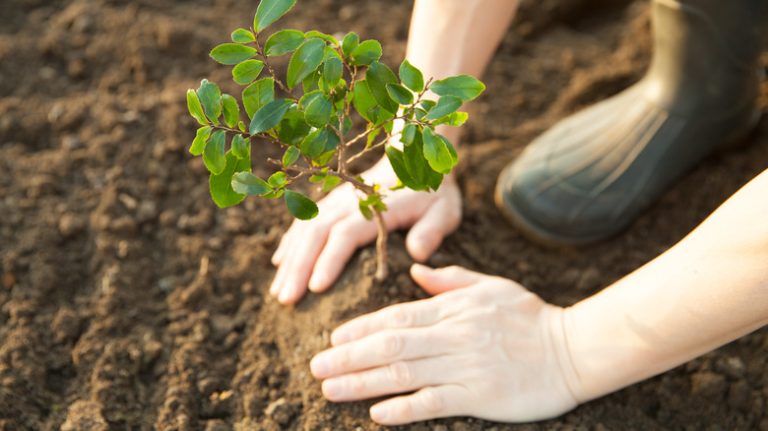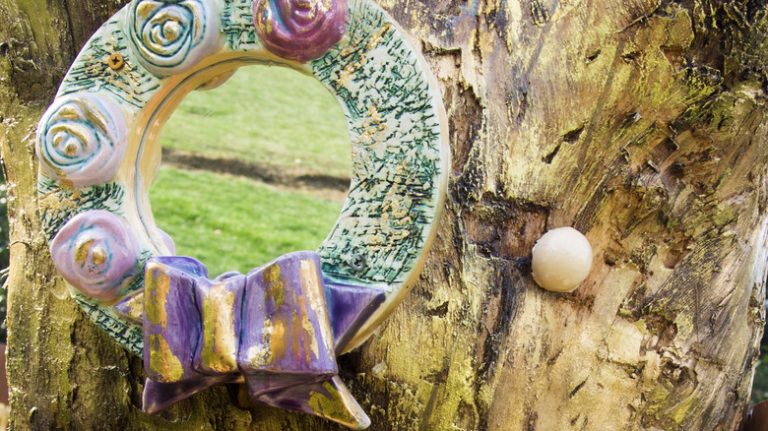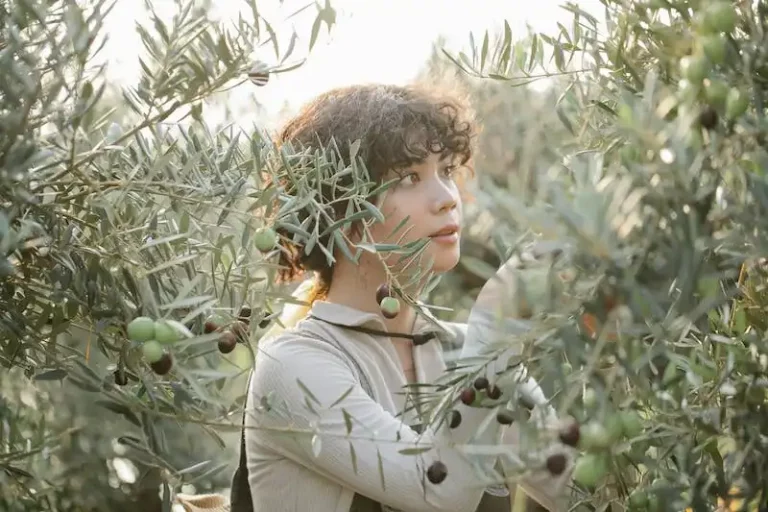If you are a bonsai enthusiast, you may already be familiar with the beauty and elegance of Japanese maples. These stunning trees are known for their vibrant colors, interesting leaf shapes, and graceful branches. Choosing the right Japanese maple for bonsai can be a challenge, as there are many different species and cultivars to choose from. In this article, we will take a closer look at eight of the best Japanese maples for bonsai, including their characteristics and how to care for them.
One of the most popular Japanese maples for bonsai is the Acer palmatum. This species has a wide variety of cultivars, each with its own unique leaf shape, color, and growth habit. Some excellent choices for bonsai include the Katsura, Nakajima, and Shishigashira cultivars. The Katsura maple is known for its beautiful orange-red foliage in the fall, while the Nakajima maple has slightly smaller leaves and a more compact growth habit. The Shishigashira maple, on the other hand, has a wonderful twisted shape and vibrant green leaves.
When selecting a Japanese maple for bonsai, it is important to pay attention to the overall shape and appearance of the tree. Look for a well-proportioned tree with a balanced canopy and interesting trunk movement. Additionally, consider the future growth potential of the tree, as some cultivars may require more frequent pruning and styling to maintain their desired shape.
During the cultivation of Japanese maples for bonsai, it is important to provide them with the proper care. They thrive in well-draining soil and should be watered regularly but not excessively. It is also recommended to use wire to shape the branches and allow them to stand out. Furthermore, Japanese maples are outdoor trees and should be placed in a location that receives plenty of sunlight.
In conclusion, Japanese maples are widely used in bonsai due to their stunning colors and interesting leaf shapes. The Katsura, Nakajima, and Shishigashira cultivars are particularly excellent choices for bonsai, with their vibrant foliage and unique growth habits. By providing the proper care and attention, these elegant trees can truly turn into works of art. If you are looking to add a splash of color to your bonsai collection, consider adding a Japanese maple to the center stage.
Dwarf Japanese Green Maple Bonsai Treeacer palmatum dwarf
The Dwarf Japanese Green Maple (Acer palmatum dwarf) is a popular bonsai tree species known for its small size and beautiful green coloration. This variety of Japanese maple is widely used in bonsai art due to its compact growth habit, making it ideal for smaller pots and outdoor styling.
During the growing season, the Dwarf Japanese Green Maple attracts attention with its brilliant green foliage and overall compact shape. Its leaves develop a splash of vibrant autumn coloration, adding a touch of contrast to its overall appearance.
One notable characteristic of the Dwarf Japanese Green Maple is its root-work. The base of the tree often displays interesting surface roots, adding further visual interest to the bonsai composition. This makes it a popular choice for suiseki (the art of stone appreciation) enthusiasts, as it can be paired with a suitable stone to create a harmonious display.
When it comes to care, the Dwarf Japanese Green Maple is relatively easy to maintain. It thrives in well-draining soil and prefers moderate sunlight. Like other Japanese maples, it is best to keep the tree in a sheltered location during the winter season to protect it from harsh frost.
The Dwarf Japanese Green Maple is widely available from bonsai suppliers, and there are several varieties to choose from. Some popular cultivars include the Kiyohime, Acer palmatum ‘Seigen’, and Shishigashira. Each cultivar has its own unique characteristics and styling possibilities.
Overall, the Dwarf Japanese Green Maple is loved by bonsai practitioners for its compact size, beautiful coloration, and ease of care. Whether you are a seasoned bonsai enthusiast or a beginner, this species is a great choice to add a touch of green beauty to your bonsai collection.
8 Best Japanese Maples For Bonsai
When it comes to choosing Japanese maples for bonsai, there are plenty of options to consider. These beautiful trees can add a splash of color to your bonsai collection, with their yellow, green, and deeper red coloration. In this article, we will introduce you to the best Japanese maple species that are widely known for their excellent bonsai characteristics.
1. Acer palmatum: This species is widely used for bonsai and offers a wonderful base for styling. The leaves of the Acer palmatum come in various colors, including green and red, which make it a perfect choice for bonsai enthusiasts.
2. Kiyohime: This Japanese maple cultivar is known for its smaller size and compact growth habit, making it ideal for bonsai. The Kiyohime maple has beautiful green leaves that turn a brilliant red during the autumn season.
3. Shishigashira: Another excellent choice for bonsai, the Shishigashira maple is loved for its unique foliage. The leaves of this maple variety are deeply lobed, adding an interesting texture to any bonsai design.
4. Seigen: This Japanese maple cultivar has a more upright growth habit and is known for its stunning autumn color. The Seigen maple features bright red leaves that can make any bonsai stand out.
5. Jonas: The Jonas maple is a new cultivar that has gained attention in the bonsai community. This variety features unique leaf interactions, creating a stunning visual effect.
6. Mas: The Mas maple is a favorite among bonsai practitioners. It has a beautiful base and is known for its rough, cork-like bark that develops with age.
7. Katsura: If you’re looking for a Japanese maple with stunning autumn color, the Katsura maple is an excellent choice. This variety displays vibrant orange and yellow leaves, adding a splash of color during the fall season.
8. Tonigh: The Tonigh maple is another great choice for bonsai. It has smaller leaves and shoots, which make it easier to develop and maintain in a bonsai pot.
Overall, these eight Japanese maple species offer a range of benefits for bonsai enthusiasts. Whether you prefer a green or red color palette, there is a maple that will thrive in your bonsai collection. Make sure to always choose a variety that suits your styling preferences and climate.
In conclusion, Japanese maples are widely loved for their excellent bonsai characteristics and stunning color variations. With so many varieties to choose from, you’re sure to find a maple that will make a wonderful addition to your bonsai collection.
Thanks for reading our article! If you have any comments or questions, please feel free to leave them below.
Acer Palmatum
Acer palmatum, commonly known as Japanese maples, are a popular choice for bonsai cultivation. These maples are native to Japan and are prized for their mature size, unique leaf shapes, and colorful foliage.
A Japanese maple bonsai, like the Acer palmatum, requires special attention during their shaping and styling process. Jonas and Gary, authors of the book “Japanese Maples,” explain in their video tutorial about the importance of selecting the right trees and paying attention to their health and appearance.
One of the most widely liked varieties of the Acer palmatum is the ‘Shishigashira,’ known for its rough bark and compact habit. Another popular choice is the ‘Deshojo,’ which boasts vibrant red leaves in the autumn. The ‘Atropurpureum’ and ‘Katsura’ maples also thrive when used in bonsai.
Acer palmatum bonsai offers a wonderful contrast of green and red colors, making them the center of attention in any bonsai display. Their refined shape and proportion, combined with their beautiful foliage, create a captivating appearance.
If you are a bonsai enthusiast or someone interested in learning more about Japanese maples, Google the book “Japanese Maples” by Jonas and Gary. This book provides valuable insights into the cultivation, styling, and care of Japanese maples, particularly the Acer palmatum variety.
Subscribe to the “Bonsai Network” for more tutorials and tips on how to care for your Japanese maples and improve their health and overall appearance. The network provides helpful guidance on topics such as wiring and root-work to help you create beautiful bonsai trees.
To add a touch of autumn to your bonsai collection, consider selecting an Acer palmatum variety like the ‘Nakajima’ or ‘Slightly Allusion’. These varieties offer stunning colors and will enhance the beauty of your outdoor bonsai display.
Whether you are a seasoned bonsai practitioner or a beginner, Acer palmatum bonsai is a must-have addition to your collection. Their unique leaf shapes, mature size, and graceful habit make them a favorite among bonsai enthusiasts around the world.
So, if you’re ready to expand your bonsai collection, consider adding an Acer palmatum bonsai. Their beauty and charm will have you hooked in no time!
Deshojo Maple
The Deshojo Maple is one of the best Japanese maple varieties for bonsai enthusiasts. Its health and vibrant appearance make it a popular choice among bonsai practitioners.
This maple variety is known for its stunning red coloration, which becomes even more intense during the autumn season. The Deshojo Maple has a dwarf and compact growth habit, growing to a mature height of around 6 feet.
One of the reasons why the Deshojo Maple is so loved by bonsai enthusiasts is its ability to add a wonderful contrast to any bonsai collection. The bright red leaves beautifully stand out among other green and yellow foliage, grabbing the attention of any viewer.
When it comes to styling, the Deshojo Maple is a very forgiving tree. It allows for both root-work and branch styling, making it a great choice for beginners and experienced bonsai growers alike.
The Deshojo Maple prefers to grow in a well-draining soil mix. It is important to choose the right soil to ensure the tree’s health and proper growth. Finally, make sure to provide the Deshojo Maple with enough sunlight and water to keep it strong and in good proportion.
Overall, the Deshojo Maple is a truly wonderful maple variety for bonsai. Its vibrant coloration, compact size, and forgiving nature make it a favorite among bonsai enthusiasts worldwide.
If you’re looking to add a Deshojo Maple to your bonsai collection, make sure to check out reputable bonsai suppliers like Jonas, Suishoen, and Seigen. These suppliers offer high-quality Deshojo Maple trees that are sure to satisfy any bonsai lover.
Whether you’re a beginner or a seasoned bonsai practitioner, the Deshojo Maple is definitely a maple variety worth considering. Its beauty and versatility make it a great addition to any bonsai collection.
If you enjoyed this article on the Deshojo Maple, make sure to subscribe to our newsletter for more bonsai tips and tricks. And don’t forget to leave your thoughts and comments below. We love hearing from our readers!
Acer Palmatum ‘Atropurpureum’
The Acer Palmatum ‘Atropurpureum’ is a beautiful variety of Japanese maple that is known for its stunning yellow foliage. It has a compact habit, making it an ideal choice for bonsai cultivation. This variety is often selected for its unique leaf color, which is a bright yellow with a splash of orange. In the autumn, the foliage will turn a deep red, creating a truly stunning appearance.
This variety is very popular for outdoor bonsai because it can be easily shaped and trained into a desired form. The dwarf habit of this tree makes it a great choice for bonsai enthusiasts who are looking to create a smaller, more compact bonsai. The ‘Atropurpureum’ variety is also known for its beautiful green bark, adding another layer of visual interest to the bonsai.
The ‘Atropurpureum’ is a new addition to the selection of Japanese maples for bonsai. It was created by Gary Nakajima and is a hybrid of the ‘Seigen’ and ‘Shishigashira’ varieties. This variety is known for its vigorous growth and good health, making it an ideal choice for beginners or those who are looking for a low-maintenance bonsai.
When styling the ‘Atropurpureum’ bonsai, it is important to choose a branch structure that is in proportion to the size and shape of the tree. The branches should be arranged in a way that creates a balanced and harmonious look. When pruning the tree, it is important to remove any dead or damaged branches to promote the health and growth of the bonsai.
Overall, the Acer Palmatum ‘Atropurpureum’ is a beautiful and popular variety of Japanese maple for bonsai. Its unique yellow foliage, compact habit, and ease of cultivation make it a great choice for both beginner and experienced bonsai enthusiasts.



